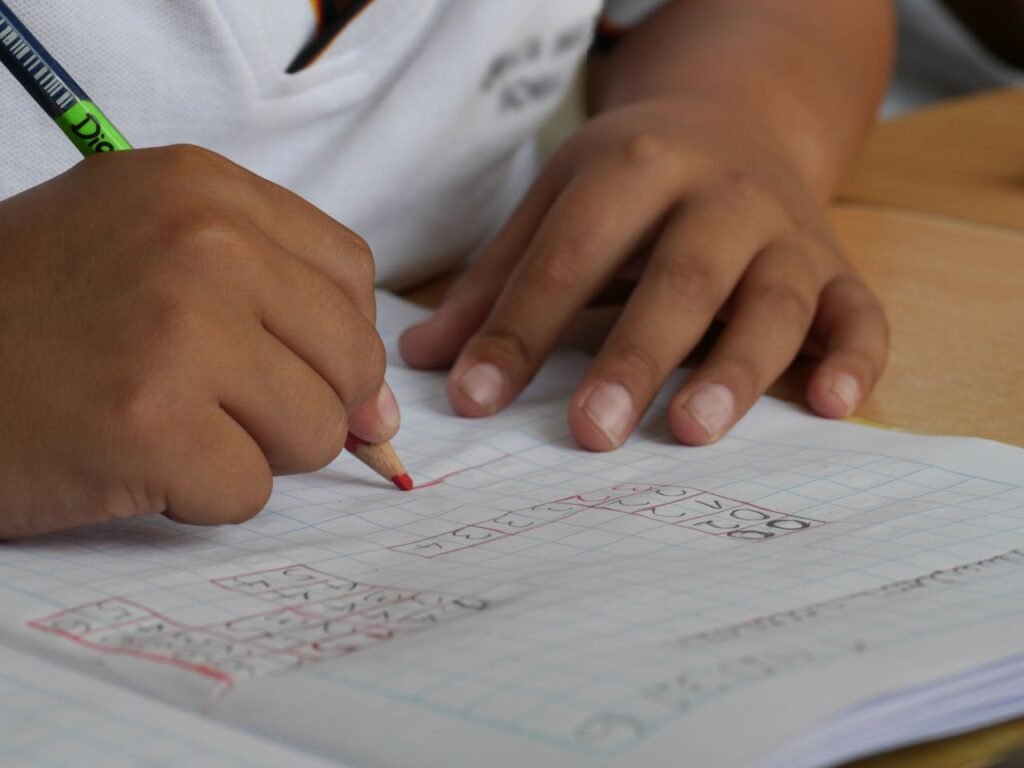Math often gets a bad reputation. Some children see it as a subject full of rules to memorize and problems to “get through” rather than ideas to explore. But that’s because so much of math learning happens in a quiet classroom, where there’s little room to play, discuss, and discover together.
Math circles are changing that.
They’re small, friendly groups where students gather—not to listen to lectures, but to talk, question, and solve problems together. It’s math as a conversation, not a chore. Kids learn by bouncing ideas off each other, tackling puzzles, and seeing math as something alive and exciting.
In this article, we’ll explore what math circles are, why they work so well, and how they’re helping students not just “do” math, but think like mathematicians. We’ll also see how platforms like Debsie are making this kind of learning possible for kids everywhere, no matter where they live.
What Exactly Is a Math Circle?
A math circle is not a new invention—it’s a style of learning that has been around for decades, but is now finding new life all over the world.
Think of it as a club, but instead of reading books or playing chess, the members explore math together. There’s usually a mentor or teacher to guide the group, but they don’t stand at the front and “teach” in the traditional way. Instead, they ask questions, present problems, and encourage discussion.
The goal is not to rush through a curriculum. It’s to explore math deeply, enjoyably, and in ways that spark curiosity.
How a Math Circle Works
- Small Group Setting – Most math circles have fewer than 15 students. This makes it easier for everyone to participate and for ideas to flow freely.
- Open-Ended Questions – Instead of “What’s the answer to 4 × 5?”, the questions are more like, “How many different ways can you solve this problem?”
- Collaborative Thinking – Students work together. They share different approaches and even challenge each other’s thinking—politely, of course.
- Mentor Guidance – The mentor isn’t there to hand out solutions. They guide, ask probing questions, and help the group explore different paths to a solution.
What Makes It Different from Regular Math Class
In a regular classroom, there’s usually a set lesson plan and a push to finish the syllabus before exams. Students often learn formulas without always knowing why they work.
In a math circle, the focus is on understanding, creativity, and discovery. Mistakes are part of the process. There’s no pressure to “cover everything” in a fixed time. Instead, students might spend an entire session exploring a single puzzle—and that’s seen as a success.
Why Math Circles Are Growing So Fast

In recent years, math circles have moved from being a niche activity to something many parents and educators actively seek out. The reason? They solve problems traditional classrooms often can’t.
1. They Make Math Feel Alive
In many classrooms, math is presented as a list of steps: follow the formula, get the answer, move on. But in a math circle, problems are presented like mysteries or games. Students get to experiment, guess, test, and discover.
For example, instead of being told how to find the area of a shape, the group might be given an odd-shaped puzzle piece and asked, “How could we figure out how much space it takes up?” The discussion might lead to new ways of breaking shapes apart, estimating, or connecting it to other math topics.
2. They Build Confidence
Many students stay quiet in class because they’re afraid of giving the wrong answer. In a math circle, mistakes are not just accepted—they’re seen as valuable. If an idea doesn’t work, the group talks about why it didn’t work and what to try next. This builds resilience and removes the fear of “looking bad.”
3. They Encourage Collaboration, Not Competition
In some math environments, students feel like they’re in a race to be the fastest or the best. But in a math circle, the focus shifts to teamwork. Students work together, bounce ideas around, and combine their strengths.
It’s a big shift—from “I have to be right” to “We can figure this out together.”
4. They Spark Curiosity Beyond the Curriculum
Because math circles aren’t tied to a strict syllabus, they can explore topics that don’t always get attention in regular classes. This might be mathematical games, patterns in nature, or connections between math and art.
This freedom often leads to “lightbulb moments” where a student suddenly sees math as part of the real world, not just numbers on a page.
Inside a Math Circle Session

Walking into a math circle for the first time can be surprising—especially if you’re used to traditional math classes. There’s no row of desks all facing forward, no teacher writing formulas on the board while everyone silently copies.
Instead, you’ll hear a soft buzz of voices. You’ll see small groups huddled over puzzles, sketching diagrams, moving counters around, or even acting out a problem. There’s laughter, moments of deep concentration, and a feeling that everyone is working on something together.
Let’s break down what a typical session might look like.
1. A Warm-Up Puzzle to Spark Thinking
Every session often begins with a short, engaging challenge—a brain teaser or playful math riddle.
This isn’t just to “wake up” the brain—it’s to get students thinking in different directions. The puzzle might have more than one correct answer, or it might be open-ended so there’s no single solution at all.
For example, the mentor might write on the board:
“Using the numbers 1, 3, 4, and 6, and any math operations you like, how can you make the number 24?”
Students might shout out quick ideas, test them, and adjust. There’s no pressure here—it’s simply to loosen up their thinking muscles and get them comfortable sharing ideas.
2. The Main Problem or Theme of the Day
Once everyone is warmed up, the group is introduced to the central challenge. This could be a puzzle about shapes, a sequence of numbers, a logic game, or even a real-world scenario like:
“How could you plan the seating for a wedding if every table must have an even number of guests, but two people refuse to sit together?”
The mentor doesn’t hand over a list of steps. Instead, they pose the problem like a mystery and invite everyone to start exploring.
This part is designed to last most of the session, allowing students to go deep rather than rushing for a quick answer.
3. Open Discussion and Idea Sharing
In a math circle, talking is as important as calculating. Students explain their reasoning out loud, sometimes even before they’ve reached a final answer.
If one student has an idea, the mentor might turn to the group and ask:
“Can anyone think of a different way to approach this?”
Hearing different perspectives often leads to “aha” moments—when one child realizes there’s more than one path to the solution.
Here, mistakes aren’t embarrassing—they’re springboards for discussion. If someone’s approach doesn’t work, the group looks at why and what can be learned from it.
4. Small-Group Exploration
Sometimes, the group naturally splits into smaller teams. One team might try solving the problem visually with diagrams, another might break it into equations, and a third might test solutions using trial and error.
The mentor moves between groups, asking guiding questions rather than giving direct answers. The atmosphere stays curious and experimental.
5. Reflection and Takeaways
At the end of the session, the group gathers back together. They talk through what they discovered—not just the final answer, but patterns they noticed, creative shortcuts they invented, and new questions that arose.
For example:
- “We found two solutions, but both used symmetry in different ways.”
- “Our method didn’t work until we realized we could change the order of steps.”
This reflection time helps cement the learning and encourages students to see math as an ongoing conversation rather than a one-time problem.
The Feeling Inside a Math Circle
The overall atmosphere is collaborative, energetic, and safe. Students aren’t afraid to speak up because they know their ideas—right or wrong—will be treated with respect. It feels more like a club meeting or creative workshop than a classroom.
Many students leave with a smile, saying, “I didn’t even realize we were doing math—it was just fun.”
The Lasting Benefits of Math Circles

Math circles may look like simple group problem-solving sessions, but the changes they bring to a child’s learning run much deeper. Over time, they shape not just what a child knows about math, but how they think, how they interact with others, and how they see themselves as learners.
Here’s what happens when a child participates in math circles regularly.
1. Stronger Problem-Solving Skills
In a typical math class, a student might be shown a formula, memorize it, and apply it in one way. But in a math circle, there’s rarely just one way to solve a problem. Students are encouraged to experiment—try something visual, test a pattern, break a big problem into smaller ones, or even create their own version of the question.
For example, if they’re given a puzzle about arranging chairs in a hall, one child might draw diagrams, another might use multiplication, and another might make a table of possibilities. Over time, this habit of looking at a challenge from different angles becomes second nature.
And here’s the real magic—once they can do this in math, they start doing it in life: figuring out new ways to tackle school projects, organizing their time better, or solving everyday challenges without giving up.
2. Confidence in Sharing Ideas
In many classrooms, speaking up can feel risky—especially if you’re not 100% sure you’re right. Math circles turn that fear on its head. Here, sharing an idea, even if it’s incomplete or incorrect, is part of the process. The group builds on it, adjusts it, or learns from it.
After a few weeks, children who were once quiet begin to speak with more certainty. They explain their reasoning without constantly looking to the teacher for approval. This growing voice doesn’t stay in the math circle—it carries into class presentations, group projects, and social conversations.
3. A Love for Math That Lasts
Many children see math as something they have to get through for a grade. But in math circles, they see math as a playground for the mind—a place where you can explore, ask “what if” questions, and find patterns hiding in plain sight.
When a child experiences that “aha” moment—the joy of discovering a solution after a long discussion—it leaves a mark. They start approaching new math topics with excitement instead of dread. This change in attitude often leads to better performance in school, but more importantly, it makes them lifelong learners.
4. Teamwork and Listening Skills
A math circle isn’t just about talking—it’s about listening. To solve a problem together, students must hear each other’s ideas fully, even if they disagree. They learn how to ask clarifying questions like, “Can you explain why you think that works?” and how to respond respectfully if they see a flaw in the reasoning.
These are the same skills that make for good teamwork in sports, science labs, and future workplaces. A student who learns to collaborate well in math circle discussions is practicing real-world communication every time.
5. Resilience and Patience
Some math circle problems can’t be solved in a single meeting—and that’s intentional. Kids are encouraged to take the problem home, think about it during the week, and bring back new ideas next time.
At first, this can feel frustrating—many children are used to getting quick answers. But slowly, they begin to enjoy the process of “sticking with it.” They learn that it’s okay to struggle, that every failed attempt teaches something, and that persistence often leads to the most satisfying solutions.
This patience and resilience transfers into other parts of life—whether it’s learning a new skill, playing a musical instrument, or working toward a long-term goal.
The Modern Evolution of Math Circles

Math circles have a long history—many started decades ago in universities and small community groups. But in the past few years, they’ve gone through a major transformation. New tools, online learning platforms, and global connections have turned math circles from local, in-person meetups into worldwide learning communities.
Here’s how they’re evolving in today’s world.
1. From Local Clubs to Global Communities
In the past, joining a math circle meant living close to one. If there wasn’t one in your city, you were out of luck. Now, with online video tools, a student in a small village can join a math circle with children from other countries.
This creates something powerful—students hear different perspectives, learn strategies they might never have thought of, and see how math connects across cultures. A child in India might explain a problem in a way that surprises a student in Canada, and vice versa.
2. Blending Technology with Traditional Discussion
In a traditional math circle, everything was done on paper or chalkboard. Now, technology lets groups use interactive whiteboards, online puzzle platforms, and even AI helpers like ChatGPT to explore problems together.
For example, a group could discuss a problem, use a shared online whiteboard to draw diagrams in real time, and then ask an AI tool to generate a similar problem for extra practice. Technology keeps the energy flowing and the learning hands-on—even when everyone is in a different place.
3. More Topics, More Freedom
Old math circles often stuck to certain types of problems—logic puzzles, number theory, or geometry. Modern math circles can explore almost anything, from patterns in nature to the math behind computer games.
Because resources are endless online, mentors can instantly pull up a new problem, video, or visual example to match the group’s curiosity. If a student asks, “How do fractals work?” the group can dive into it right away, without having to wait for the next meeting.
4. Flexible Schedules for Busy Kids
Today’s students often have packed schedules—sports, music lessons, homework. Online math circles solve this by offering sessions at multiple times, or even recording them so students can watch later.
This flexibility means more kids can join without giving up other activities they love. It also allows children in different time zones to meet and work together.
5. Platforms Like Debsie Make It Simple
Organizing a math circle used to be hard—you needed a space, a mentor, and a group of students who could all meet in the same place. Now, platforms like Debsie make it simple.
Debsie brings together expert teachers, small group sessions, and interactive tools so students can experience the benefits of a math circle from anywhere. Kids don’t just watch—they actively participate, share ideas, and explore real-world math challenges in a safe, supportive environment.
How Debsie Runs Its Math Circles

At Debsie, math circles are more than just small-group lessons. They’re carefully designed spaces where curiosity, creativity, and problem-solving come together. Our approach blends the warmth of a supportive community with the expertise of experienced teachers and the flexibility of modern technology.
Here’s how we make it work.
1. Small Groups for Big Impact
Each Debsie math circle is kept small—usually under 12 students—so every child has the chance to speak, share, and ask questions. Small groups make it easier for shy students to find their voice and for mentors to notice when someone is stuck or ready for a bigger challenge.
In these intimate settings, no one fades into the background. Every idea gets a hearing, and every student feels like a valued part of the group.
2. Expert Mentors Who Guide, Not Lecture
Our math circle leaders are experienced educators who know that real learning comes from exploration. Instead of standing at the front and delivering answers, they guide students with open-ended questions:
- “Why do you think that works?”
- “Can we find another way?”
- “What would happen if we changed this rule?”
This mentoring style turns every student into an active thinker rather than a passive listener.
3. Problems That Spark Curiosity
Debsie math circles don’t rely on textbook exercises. Instead, sessions are built around problems that invite creativity—puzzles, games, real-world challenges, and mathematical “mysteries” that don’t have a single obvious path to the answer.
For example, one week the group might explore how to design a fair voting system for a school election. Another week, they might investigate patterns in music rhythms or nature’s spiral shapes.
4. Collaboration Over Competition
We believe students grow more when they learn with each other, not against each other. In Debsie math circles, teamwork is celebrated. Students work in pairs or small teams to test approaches, compare strategies, and combine ideas.
This collaborative atmosphere not only builds problem-solving skills but also teaches communication, patience, and respect for different ways of thinking.
5. Blending Online Tools with Hands-On Thinking
Even though our math circles are online, we keep them interactive. Students use shared whiteboards to draw diagrams together, annotate problems in real time, and build visual solutions as a group. Sometimes, they even use everyday objects at home—coins, paper shapes, building blocks—to test out ideas.
By mixing technology with tangible, real-world thinking, we make math feel both modern and personal.
Why Math Circles with Debsie Are a Game Changer for Your Child
Math circles can change the way a child sees math—but when they’re run with care, structure, and creativity, they can also change the way a child sees themselves as a learner. That’s exactly what happens at Debsie.
Here’s why our approach makes such a difference.
1. Math Becomes a Place for Exploration, Not Pressure
Many children think math is about speed and perfection. In our math circles, it’s about curiosity. There’s no penalty for a wrong turn—if something doesn’t work, we treat it as a clue to try another path. This takes away the fear and opens the door to genuine problem-solving.
2. Every Child’s Voice Matters
In a typical class, it’s easy for confident students to dominate discussions. In our small groups, every student has space to share their thoughts, even if they’re unsure. Our mentors make sure quieter voices are invited into the conversation and encouraged to contribute.
3. Skills That Go Beyond Math
While the focus is on mathematical thinking, students also grow in areas like teamwork, resilience, and clear communication. These are life skills they’ll use in any subject, any career, and any challenge they take on.
4. Learning That Sticks
Because our math circles are discussion-based and hands-on, students don’t just memorize—they understand. They remember the “why” behind a method, not just the “how.” This deep understanding stays with them far longer than a memorized formula.
5. Global Connections, Local Feel
Our math circles bring together students from across the world, creating a rich mix of perspectives. But each group still feels close-knit, like a local club where everyone knows each other. Students build friendships as well as skills.
Conclusion
Math circles are proof that learning math doesn’t have to mean sitting quietly and copying notes. They show children that math is alive—something to explore, discuss, and enjoy with others.
At Debsie, we’ve taken this powerful idea and made it accessible to children everywhere, from ages 5 to 18. Our math circles combine the best of traditional problem-solving with the creativity and flexibility of modern learning tools. They’re guided by expert mentors who know how to bring out every child’s curiosity, confidence, and unique way of thinking.
We’ve seen shy students become bold thinkers, reluctant learners discover a love for puzzles, and children who once feared math begin to see it as a subject they can own and enjoy.
📌 The next step is simple: Join one of our math circles and see the change for yourself. Your child won’t just improve in math—they’ll grow in problem-solving, communication, and confidence for life.
👉 Book a free trial class today at https://debsie.com/courses/ and give your child the chance to experience math as it was meant to be—exciting, challenging, and fun.
Read next:



